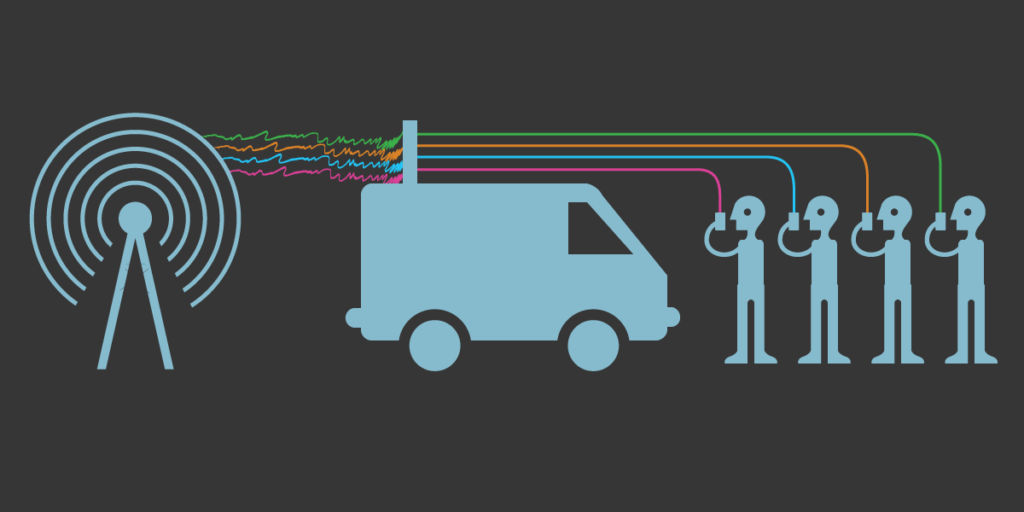
The Washington Post has called mom-and-pop vape shops “the small business success story of the decade:” a product with high demand and a market with relatively low barrier to entry, there’s a reason you’ve been seeing vape shops pop up everywhere recently. In the Netflix documentary Betting on Zero, Zac Kirby from Ponca City, Oklahoma loses a lot of money with the notorious multi-level marketing company Herbalife. His solution? Turn the brick-and-mortar location he had purchased to hawk Herbalife smoothies into a vape shop. “I was one of the lucky ones,” he says, “who found a new and emerging industry to get into.”
As cigarettes have fallen further out of favor, nicotine and THC vaporizers have started to take their place, with people drawn to the lack of obnoxious smell coupled with a nicotine or THC high. Vaporizers have been around for a while, but their original iteration was large and bulky, and their demographic confined to those who wanted to buy or build something larger than an iPod to get a nicotine fix.
You’ve also likely heard about the spate of vape-related illnesses that have popped up over the past year, capturing huge amounts of media and political attention. President Trump, as he is wont to do, has even threatened executive action to stem the so-called vaping crisis. And while our current administration is much more likely to pass executive orders than previous ones, the federal government actually has little control over the sale of nicotine projects short of executive action.
In 2009, the Obama administration passed the Family Smoking Prevention and Tobacco Control Act, which gave the FDA the power to regulate certain aspects of the tobacco industry. Importantly, this means that the FDA can pass rules related to tobacco regulation without an explicit mandate from Congress, as long as the rule is within the power granted to the FDA in the Act and enacted in accordance with the administrative procedure act. Prior to the act, tobacco was regulated through a combination of state, federal, and municipal laws, with no federal agency involvement. The Act ceded authority to the FDA over tobacco manufacturing, barring states from passing stricter laws related to that aspect of tobacco regulation. While Beverly Hills is allowed to ban cigarette sales outright, it can’t regulate the way cigarettes are manufactured, because that power lays with the federal government.
This Act, however, only preempted some forms of state and local regulations against tobacco and preserved others. For instance, states and municipalities still have the power to ban any or all classes of tobacco, but they can’t force more stringent labelling laws than are required by federal statute. In Beverly Hills, for instance, gas stations and convenience stores will be prohibited from selling cigarettes beginning in 2021. 90210 is still an extreme outlier in tobacco regulation; the city was one of the first to ban smoking indoors in the late 80s, and will be one of the only areas of the United States where it’s illegal to sell tobacco products.
So why have states and municipalities been so quick to ban vape products while leaving traditional cigarettes and other tobacco products on the shelves? Tradition and history likely have a lot to do with it. The Beverly Hills cigarette ban, for instance, has a carve-out for the cigar lounges that have been in the neighborhood since the days of Old Hollywood. Even Auschwitz prisoners—allowed little else– were allotted three cigarettes per week, such was their importance. As unhealthy as cigarettes demonstrably are, and as successful as advocates have been in cutting the number of smokers in America, they’re still an indelible part of at least some corners of social culture. There’s a reason everyone was swooning over that photo of Phoebe Waller-Bridge celebrating at an Emmy’s after-party.
Vaporizers, on the other hand, are new, and are especially new to a particular class of young urban professional. Much has been written about how the advent of Juul and similar devices, with their sleek, unobtrusive design, has brought vaporizing to the mainstream. Where vaporizing before was an activity limited to those who wanted to buy or build their own large devices, and nicotine oil had to be purchased at specialty shops rather than as gas stations or convenience stores, it’s now been adopted by people in every demographic. Vaporizers just weren’t popular enough to care about before they looked like USBs.
But Juul and their competitors have changed all of that—the number of high school students who say they have vaped nicotine has doubled since 2017, from 11 percent to nearly 21 percent. The fact that vaporizers have now become the provenance of young urban professionals, however, combined with the fact that there is a legitimate issue with teen use of the products, is arguably what has made vaping such a ripe political target. It’s relatively new, it’s entered the mainstream in a short amount of time, it’s been adopted by teenagers as contraband, it’s made hundreds of people ill—vaporizing was primed to catch the ire of societal moral panic.
There’s also the issue of the tobacco lobby—or Big Tobacco. Decades of pressure on all levels of government meant a hands-off approach to tobacco regulation prevailed until the 90s. And while the vast majority of states and establishments have chosen to ban smoking indoors, banning cigarettes outright would mean losing monetary support from Big Tobacco and angry constituents, in addition to a host of lawsuits.
Tobacco 21
You may have seen pro-21-year-old smoking age ads paid for by Juul or Juul’s parent company Altria in magazines or on TV recently. Why on earth, you might wonder, would the companies accused of aggressively marketing to teens supporting raising the age to purchase tobacco products? Because those companies want laws that will raise the smoking age while simultaneously preventing states from passing new tobacco regulations, with the goal of eventually passing a preemptive federal law.
So if tobacco companies get their way, a federal law that would raise the smoking age would also grant the federal government preemptive authority over other aspects of the tobacco industry, like the ability to ban certain products. This would mean that cities like Beverly Hills that have outlawed cigarettes, and the multitude of other states and municipalities that have banned vaping products recently, would no longer be able to do so. A smoking age of 21 may seem great to most people—which is what tobacco companies are counting on so that they can slide federal preemption of state and municipal power over tobacco into the statute.
Legalize and Regulate
The Temperance Movement in the United States was the result of a mix of potent cultural forces culminating in the ratification of the 18th Amendment—better known as Prohibition. One of the results of this brief period of constitutional insanity was that on average 1,000 Americans died every year of prohibition from tainted alcohol. Barred from enjoying their vice of choice, prohibition-era Americans would “denature” industrial-strength alcohols like methanol, many times with fatal or paralyzing results. “Blind drunk” became more than a figure of speech.
There are obvious parallels between prohibition and the current federal legal status of marijuana. When NBC News enlisted cannabis testing agency CannaSafe to run a battery of tests on 18 separate brands of THC vaporizer cartridges, the 3 purchased from legal dispensaries came back negative for pesticides, heavy metals, and solvents. The other 15—purchased on the street—came back positive for at least one. Amanda Chicago Lewis, a prolific cannabis writer and activist, has been warning about the dangers of unregulated vapes for the past few years. A wholesale ban on vaporizers will likely only serve to make the problem worse. When it comes to legitimate THC oil in places where marijuana is legal, for instance, a lot of legal states now limit the parts per million of butane allowed in the oil. Indeed, multiple health professionals and advocates have voiced concerns that traditional cigarette smoking will increase if vapes are banned nationwide. Others fear that the market for THC oil will move further underground with resulting safety concerns. Their fears aren’t unfounded: illegal markets create safety concerns precisely because illegal products and services can’t be regulated or monitored by the government.


